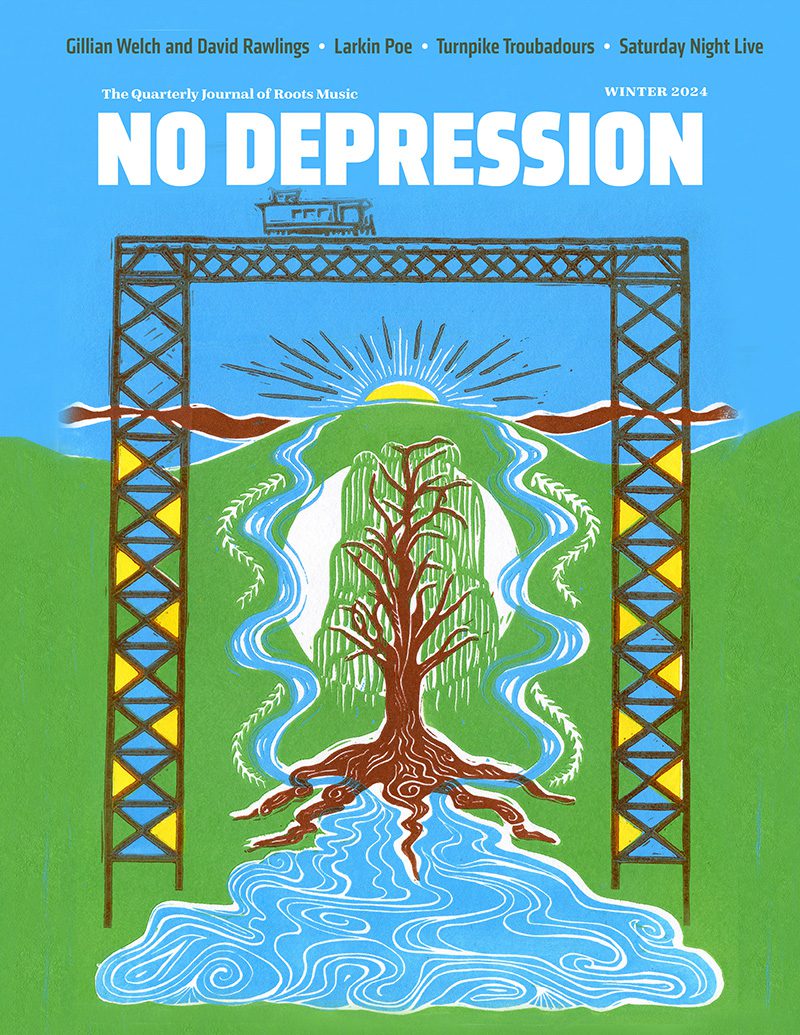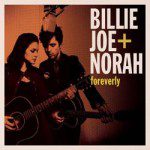Book Excerpt: Springsteen Before the Fame
One day in late 1973, the mailman delivered a review copy of Bruce Springsteen’s just-released second album. I’d barely heard of him before the LP arrived but the more I played it the more captivated I became. So I called the publicity department at Columbia Records and said I’d like to talk with Bruce. A couple of weeks later, on January 15, 1974, he phoned me at home and I interviewed him for an article that ran that March in a then-popular national music magazine called Zoo World.
Flash forward nearly four decades. A writer contacted me out of the blue via this very No Depression website and told me he was putting together an anthology of Tom Waits interviews for publication by Chicago Review Press. He’d unearthed an interview I’d done with Waits for Melody Maker back in 1974, and he wanted to use it in the book. I said OK and wound up having a few email exchanges with the publisher, during which I asked whether Chicago Review Press might ever be interested in a similar book on Bruce Springsteen. Next thing I knew, I was staring at a deadline for what became Springsteen on Springsteen: Interviews, Speeches, and Encounters.
This volume starts in 1973, when he was as a struggling artist, and follows him up to 2012, when he had achieved almost unimaginable wealth and worldwide fame. Included are interviews with well-known media figures, including Charlie Rose, Ted Koppel, Brian Williams, Nick Hornby, and Ed Norton, plus some of Springsteen’s most memorable speeches. Of course, the book also features my own interview with Bruce.
As I say in an introduction to that piece:
“He was working [at the time of our conversation] for about $75 a week and could still walk down the street unrecognized. He spent much of our interview making good-natured but serious complaints about how little he was able to pay his band (whose members I referred to in my article as “five unknowns”). Then–when I mentioned that while I loved his second album but had yet to hear his first–he offered to mail me his copy because “I can’t afford a record player to play it on.” I wasn’t sure whether he was joking but told him to keep the LP, saying I was confident he’d be able to buy whatever he wanted before too long.
“I’ve been wrong about many things in my life but I was right about this. Nineteen months after I talked with Springsteen, he released the last album Columbia had agreed to issue for him–his final swing of the bat at fame. He knocked the ball right out of the park with Born to Run, which famously landed him on the covers of simultaneously published issues of Time and Newsweek, went on to sell more than six million copies and changed everything.
“Having heard his earlier music–and the determination in his voice when we talked in 1974–I wasn’t surprised.”
Here’s my 1974 article on Springsteen, as it appears in Springsteen on Springsteen:
Bruce Springsteen: Say Hello to Last Year’s Genius
Zoo World, March, 14, 1974
Perhaps you know someone who at a very early age proclaimed his intention to become a doctor and, after vanishing into deep study for 20 years, emerged wearing a stethoscope. If so, you might be able to imagine the intensity of Bruce Springsteen’s lifelong obsession with music.
“I always knew what I wanted to do and where I was going,” says the singer/songwriter from Asbury Park, New Jersey. “Anything other than music was always a dead end for me.”
Now twenty-four, Bruce first picked up a guitar at age nine and has been playing, with only rare interruptions, ever since. The only “real” job he has ever had, as a gardener, ended quickly. He left behind an equally brief college career because “the times were weird, the students were weird and the school was weird.” And because the Army thought Bruce just as strange as he felt the college scene to be, he was exempted from two years in uniform.
Sidestepping these irrelevancies with pleasure, Bruce continued to concentrate on his music. After performing in more local bands than he can now remember by name, he worked for a time as an acoustic soloist. And by early last year, he had assembled his present band and had put together a solid repertoire of original material.
It was then that Mike Appel (who with Jim Cretecos manages Bruce and now produces his albums) brought him to Columbia Records. Upon hearing a few songs, Columbia’s John Hammond Sr. promptly handed a two-record contract to Bruce and his band. Hammond, who had signed Bob Dylan ten years before, reportedly said that Bruce was a lot further along musically than Dylan had been at the same stage of his career.
On the strength of this praise, Columbia poured big money into promotion, but the advertising push partly backfired. Rolling Stone, for example, did a piece called, “It’s Sign Up a Genius Month” and dismissed Bruce’s first album (Greetings from Asbury Park, N.J.) with a string of sarcastic superlatives.
Most reviewers, however, were genuinely enthusiastic. “One of the truly great singer-songwriter-performing talents our country has produced,” wrote a Record World columnist. “You know the kid is good when you wake up and you’re singing his songs,” commented Crawdaddy editor Peter Knobler. “Never have I been more impressed with a debuting singer,” raved a writer for the L.A. Free Press, and Al Bianculli, in these pages, said simply, “’73 is “Bruce Springsteen’s year.” Bruce, it certainly seemed, was well on his way.
But a year later, he explains that he has not yet exactly taken the country by storm. “I ain’t makin’ that much money,” he says. “I’ve got some great musicians in my band and I’m payin’ them terrible money. I pay myself the same, but it’s terrible for me, too. I mean, we’re barely makin’ a livin’, barely scrapin’ by.”
Though Bruce’s newly released second album may sell better, Greetings attracted only about 23,000 buyers, a respectable yet not spectacular achievement for a debut LP. The Columbia contract has been extended, but only for a third album. And while the critical praise keeps coming, Bruce wishes he could sell records as easily as he elicits a reviewer’s acclaim.
The second album indicates, at the very least, that he deserves a much wider audience. Written and arranged by Bruce, its highly emotional songs fuse vivid lyricism to poignant melodies. Incorporating touches of jazz, soul and Latin music, this is basically get-up-and-dance rock ’n’ roll. When the record ends, you may find yourself wishing Bruce and his group could jump out of your stereo and do an encore.
The five unknowns who comprise the backup are among the most flexible and versatile rock musicians performing today. Perhaps because they’ve been working with Bruce for a long time, they are able to inject the music with a dose of their own ideas without ever straying from his intentions or detracting from the overall cohesion.
While it is difficult to single out any one band member over the others, Clarence Clemons’s sax playing has to be considered a high point. Daubing the broad strokes of Bruce’s moody portraits, he underlines the reflective side of the singer’s style. And, when the tempo accelerates, Clemons punctuates the change with a burst of energy.
Bruce’s own immense talent is omnipresent. Like Rod Stewart, Van Morrison and Dylan, he has a limited vocal range, but his imagination and expressive ability seem almost boundless. His melodies are influenced by the work of many other musicians, most notably Van Morrison; yet, like all true originals, this composer absorbs what his predecessors have done and uses the gleanings to create music that can only be called his own.
Lyrically, Bruce accomplishes more in one tune than many artists do in an entire album. From each of his songs, which are structured like stories, one or more well-defined characters emerge. “Incident on 57th Street,” for example, is a close-up look at Spanish Johnny, a “romantic young boy” who wavers between involvement with a girl named Jane and the hard life on “Easy Street.”
Playing a “cool Romeo” to Jane’s “late Juliet,” he sits up alone and watches her while she “sleeps in sheets damp with sweat.” When she opens her eyes, he is dressing to leave and voices are heard beckoning through the window: “Hey Spanish Johnny, you want to make a little easy money tonight?”
Leaving their relationship no more or less tentative than it was when the song began, he whispers a farewell: “Goodnight, it’s all right Jane / I’m gonna meet you tomorrow night on Lover’s Lane.” Not quite sure why he is going, what he is looking for or whether he will discover it, he adds: “We may find it out on the street tonight, baby / Or we may walk until the daylight, maybe.”
“Fourth of July, Asbury Park (Sandy)” similarly balances the emotions of its central character against the outer situation that helps mold them. In this vignette, some of the imagery recalls Van Morrison’s “Brown-Eyed Girl,” but Bruce builds a much richer environment than does Morrison.
By the time Bruce tells Sandy that “for me, this boardwalk life’s through,” the listener has been transported by the lyrics to Asbury’s arcades, beaches and casinos. And one perceives that, for the singer, this “carnival life on the water” is a colorful, fascinating film, but one that has become stuck at a single frame.
“I just got tired of hangin’ in them dusty arcades,” he sings, “bangin’ them pleasure machines.” And later: “That tilt-a-whirl down on the south beach drag . . . they kept me spinnin’, I didn’t think I’d ever get off.” When the song ends, one realizes that it has not dealt so much with the “scene” as with its main protagonist, because everything is described so completely through his eyes.
Is Bruce singing about himself here? “I don’t know,” he says, pausing for a long moment. “I’ll tell ya the truth. I really don’t want to talk about it. I really don’t want to touch on the songs at all, because I’ll screw them up. As soon as you start talking about it, you’re messing with the magic, you know?”
While he himself is reluctant to discuss his songs, Bruce seems glad that other people are beginning to do just that. “I got talking with a cop last night who knew all the music, all my tunes, and it blew my mind! You know, it was an amazing thing. He was talking about ‘Sandy’ and ‘Rosalita.’ He knew all the songs.”
Visions of stardom have been known to dance in the head of a young artist as his work starts to become popular. But, says Bruce, “I don’t think about it. I can’t get involved in that. ’Cause I learned, don’t ever expect anything. I got my hopes, you know, but my hopes are completely based in reality, in what I know I can do.”
For example? “Well, for one thing, I hope to be makin’ a little more money than I am right now. I want to be able to take care of people a little better than I can right now. ’Cause if you don’t have a sufficient amount of money where people can be comfortable, they’re always going to be sweating it out, worrying whether they’re gonna make it or not.
“That’s very hard for the people in the band, ’cause there are pressures. Guys in the group gotta pay alimony, rent, food bills. And a guy may just want to go out for the evening to relax, go to a bar or something and buy a drink, you know?
“The older people get, the harder it is for them to hang on to an unprosperous thing. Even though this is a very together band. You start thinkin’, ‘Maybe I ought to go into a different profession, fix TVs, become an electrician or something.’ You start thinking a little bit more seriously, you know.”
Does Bruce find that happening to himself? “Oh, no, not to me.” He laughs. “This is it for me, you know. I got no choice. I have to write and play. If I became an electrician tomorrow, I’d still come home at night and write songs. If you can choose, you might as well quit. But if you have to, you have to.”
This excerpt from Springsteen on Springsteen: Interviews, Speeches, and Encounters is printed with the permission of Chicago Review Press. © 2013 by Jeff Burger. For more information, please visit byjeffburger.com and ipgbook.com.




